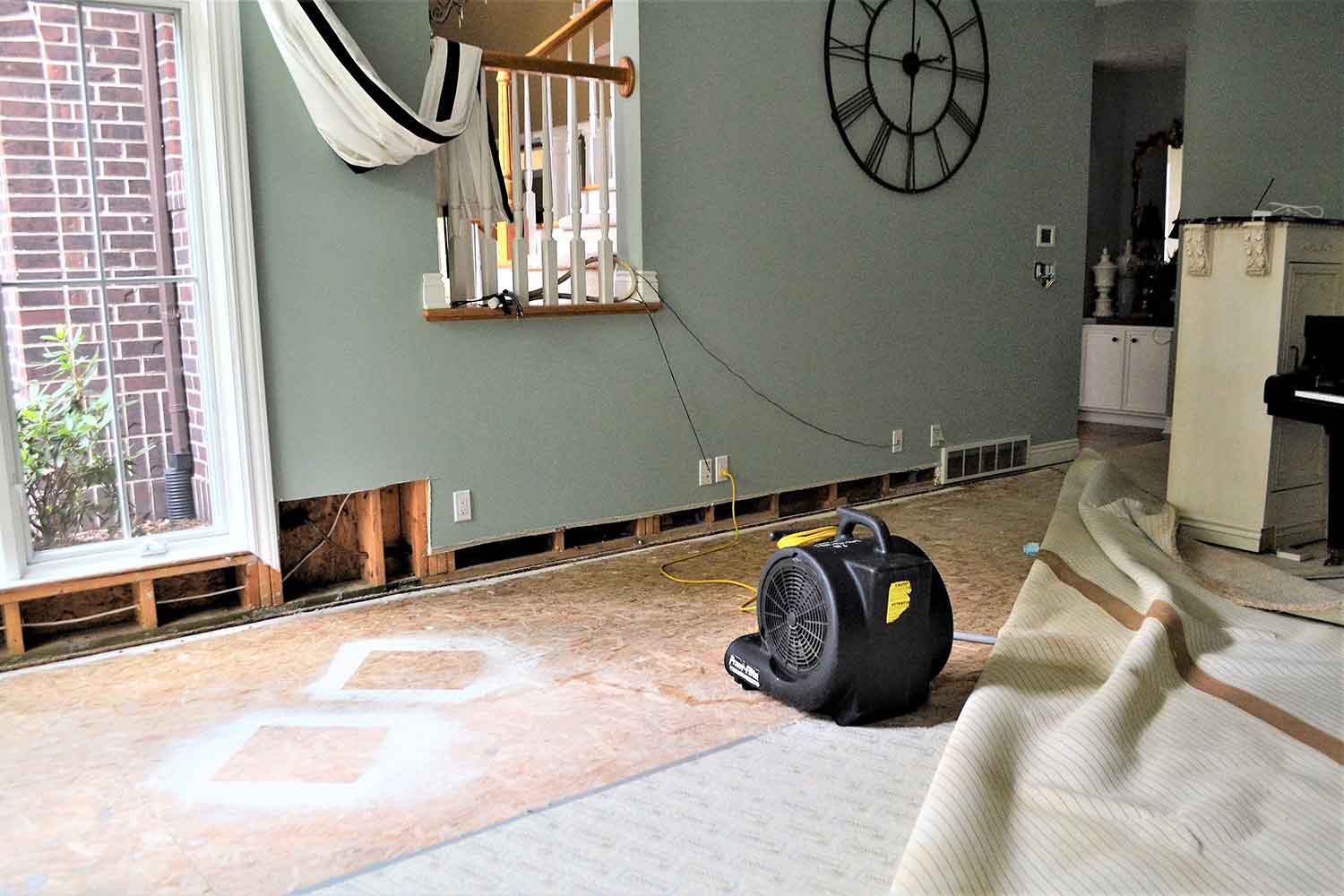House floods cause millions of dollars in damage each year. Thankfully, you can take steps to mitigate flood damage and keep your home and family safe. Below we outline the top things to do inside your home to prevent flooding.
Build with Flood-Resistant Materials
If you’re exploring flood prevention before buying or building, you can proactively prevent flooding by choosing flood-resistant building materials. Concrete, treated plywood, and closed-cell and foam insulation are standard building materials that effectively prevent flood damage to your home.
Building material is considered flood-resistant if it can withstand direct contact with water for 72 hours without incurring significant damage; that is, damage that requires more than low-cost cosmetic repairs. So if you’re building or upgrading your home with these materials keeps flood damage at bay.
Waterproof Your Basement
Your basement sits below ground level, making it especially susceptible to flooding. Waterproofing your basement prevent flooding, and with a little investment upfront, you can save thousands of dollars in the long run. Below are a few ways to waterproof your basement and stop flood damage before it starts.
Repair Cracks with Hydraulic Cement
Before waterproofing your basement, inspect the area for leaks, cracks, or moisture. Finding these problem areas and making repairs is the first step to flood prevention.
If you notice cracks in your basement walls, fill them with hydraulic cement. Repairing cracks is a simple fix that you can do yourself. First, apply hydraulic cement to the affected area. The material expands and dries quickly to form a water-tight bond that fills crevices and prevents water from seeping in.
Apply a Waterproof Coating
Because basements sit below grade, they’re exposed to all the water that soaks into the ground. As a result, you might notice moisture on your basement walls. You can quickly fix this issue by applying waterproof paint to the walls. This type of sealant is premixed, and you apply it exactly as you would a coat of paint.
Even if you don’t notice wet walls in your basement, we highly recommend applying a waterproof sealant. Every step you take towards flood prevention saves you headaches, stress, and money down the road.
Address Window Wells
Window wells are familiar sources of basement floods. If they aren’t correctly installed or lack adequate drainage, water can seep into the walls or even pour into the basement if heavy rain comes.
It’s challenging to install proper drainage on a preexisting window well. However, an alternative method is to dig out a few feet below your well. Then, fill the space with gravel. This allows water to quickly flow away from your window well and absorb more efficiently into the soil. It would be best if you then caulked around the window to ensure no water seeps in through any potential cracks.
Addressing weaknesses in your window wells prevents water from pooling or leaking into your basement.
Install a Sump Pump
The idea behind a sump pump is simple: it collects floodwater inside your home then pumps it away and outside of your home.
If water should begin filling your basement, a sump pump serves as a type of last-resort flood prevention. They’re typically installed at the lowest point of a home’s basement when the ground and basement are both dry. When the water reaches a certain level inside the pump, it turns on and forces the water through drainage pipes away from your foundation.
With a properly working sump pump, you can have peace of mind that your basement and your home won’t incur flood damage, even if there’s an unknown leak. And with a little preparation and know-how, you can easily execute your DIY sump pump project.
Install Check Valves on Your Pipes
When you’re a homeowner, rainwater floods aren’t the only floods you need to plan for. In some cases, a home’s sewage system can flood. And that means a severe and stinky problem for your home. Installing check valves on your pipes prevents sewage backup from flooding your house.
All pipes entering your home should be fitted with gate valves to stop any backflow from causing flood damage.
Lift Your Home
Perhaps the most effective method of flood prevention is lifting your home’s foundation. Raising your home above flood level protects your house, your belongings, and –– most importantly –– your family.
A qualified and experienced lifting contractor like DeVooght House Lifters can walk you through the home lift process to determine if a house lift is a good option for your home. The team at DeVooght lifts and relocates homes of various sizes and builds with exceptional results. DeVooght has served its clients for the better part of four decades and brings high-level expertise to each project.
Lifting your home is a big step, but it’s one that DeVooght House Lifters will happily guide you through. If you’re ready to explore the flood prevention benefits of a house lift, contact the team at DeVooght House Lifters today.

